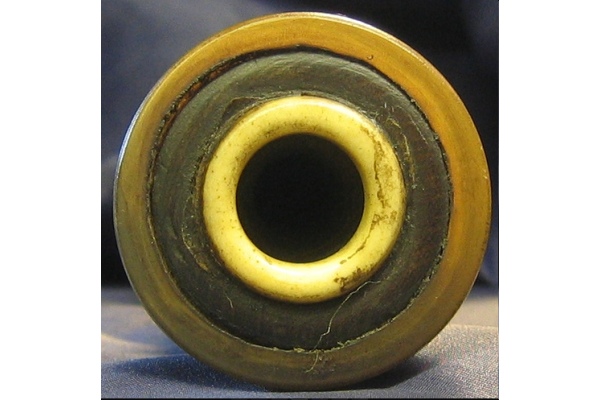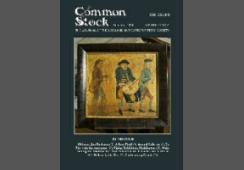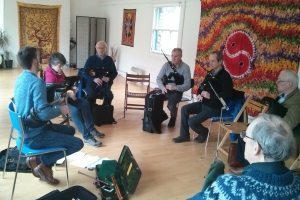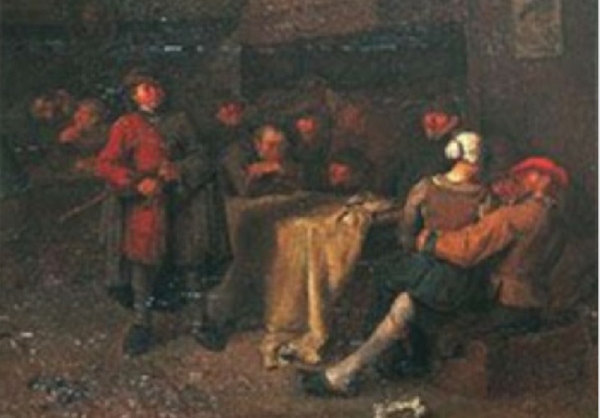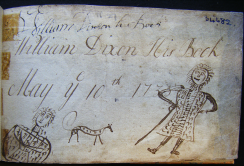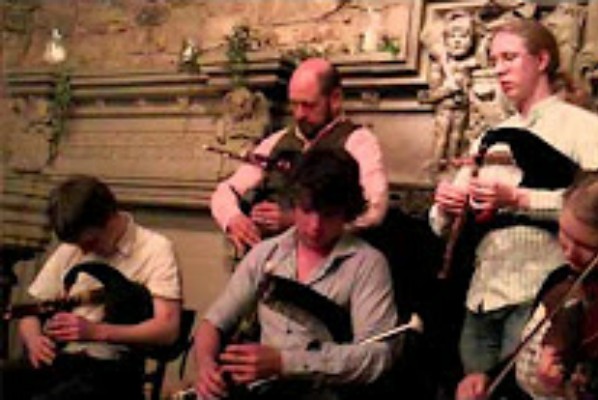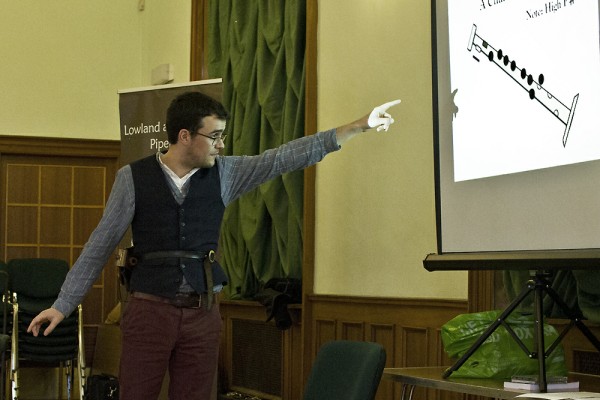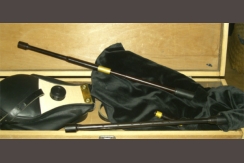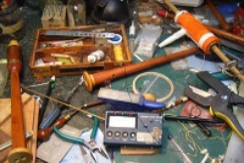(This article was originally published in our June 2006 issue; it is as enlightening now as it was then)
Nigel Richard, pipemaker and [former] chairman of the Society, gives some insight into the niceties of making sure that a chanter is in tune, and what to do if it isn’t
THIS might be looked on by some as a rather dry technical article for a magazine that usually reflects on the glories of the music and history of the pipes. However we all know how the delight of a well-tuned set of pipes compares with the misery of an out-of-tune set, and if the facts are complex at times, that reflects the reality of the matter - some things cannot be reduced to sound bites! Anyway I hope that it may give those of you not already knowledgeable about the subject some insight into what you should be looking for if you suspect that your pipe chanter is not sounding quite as it should, however much time you spend tuning the drones.

When you buy a set of pipes, your chanter should be in tune. However, some of you pipers out there may have new or second-hand chanters which
you feel are out of tune, but you can’t get help because you can’t contact the maker (he may have long since gone to meet his!), or whatever.
This article aims to advise pipers in this situation on what they can do, answering the following questions as simply as possible without being overly technical. It asks the following questions: 1) What is "in tune"? 2) How do I tell if my chanter is in tune? 3) What can I do to correct the tuning?
1) What is "in tune"? In 1862, the German scientist Hermann Helmholtz developed his theory of concord and discord and explained that all dissonances are due to unpleasant beats generated by the component notes. In concords, the combination of notes with small whole number frequency ratios does not result in separate rough-sounding beats being generated.
In tuning bagpipes, the strong presence of the drones makes it important that the chanter notes sound good when heard with them. The basis for tuning bagpipe chanters is generally a system called just intonation (JI), where the notes are based on a scale where the frequency of the notes retains this simple mathematical relationship with the frequency of the drones (and the tonic note of the chanter). This system contrasts with the equal temperament (ET) system used on most instruments, where modulation is a much more important consideration than it is in bagpipes, which generally only play in a few closely related keys. Those interested in further technical detail can consult textbooks, the web etc; I will simply set out a table which illustrates the difference between the two systems by using the standard method with 1200 cents to an octave.
Note Frequency (in cents)
Ratio to tonic JI pitch ET pitch JI description
B 9/8 204 200 Large whole tone
C# 5/4 386 400 Major third
D 4/3 498 500 Fourth
E 3/2 702 700 Fifth
F# 5/3 884 900 Sixth
G 7/4 969 1000 "Trumpet seventh"
G 16/9 996 1000 Minor seventh
A 2 1200 1200 Octave
Differences of a few cents between JI and ET are not significant. The important information to come from this table is that C# and F# should be around 15 cents flat of ET, and G should be flat of ET, but the big question is how much? I generally pitch my high G around 10 cents flat. This may seem an uncomfortable compromise, but much thought has gone into it. Many good pipers tape down their high G and I believe that their ear is looking towards that sweet 7/4 ratio that sings with the drones and I am sure is what the pibroch cross fingered 7th is intended to be. The skilled fiddle player will adjust the pitch of his G note to match, and if it is just a duo he is part of then this gives excellent results.
However, 30 cents (3/10 of a semitone) is a big (too big for many ears) distance to tune down G when you are intending to play with any fixed pitch ET instrument (guitar, piano, accordion etc). In the end of the day, the exact pitch for this note is a matter of taste (and I don?t wish to imply whether you have any or not!), has been the subject of heated debate for many years and I am sure will continue to be so. Some great Highland bagpipe players have their B tuned to the "small whole tone" interval at 182 cents above the tonic (Ratio 10/9): again, it’s a matter of taste. In my view it is less practical when playing with other instruments, and does not sound any more harmonious than the 9/8 interval which you might expect.
2) How do I tell if my chanter is in tune? A few people have perfect pitch and can tell if the A on your chanter (high A for smallpipes) is 440Hz or not. Most people have to resort to a tuner. Once the pitch of the tonic is settled, people with a good ear will have a clear impression of how in tune the other notes of the chanter are. I recommend that you try to train your ear to recognise "in tune-ness", but also use a tuner to check and in fact help educate your ear as to the sound you are looking for.
When using a tuner, start by blocking off the drones and checking high A to low A. If high A is too sharp, and also the whole top hand a bit sharp (although probably progressively less so as you go down the scale), then move the reed out a little; if it is just the A then tape it down as necessary.
Carry on and check the whole chanter. If the whole chanter is significantly sharp or flat, you may need a new reed, or possibly a new chanter. If the tuning is out on various notes in the scale and the top is in tune with the bottom then its decision time, but first double-check the sound of the chanter with one or more drones playing at the same time.
3) What can I do to correct the tuning? Well, assuming that you can’t contact the maker of the chanter, and don’t wish to use the services of another, then you have to take some steps to tune it yourself. Firstly try to make sure that the reed is not at fault. A reed can be faulty on particular notes: a flat F#, for example, can often be due to a weak reed rather than a badly positioned tone hole.
If the tone of the reed is good but some notes are out of tune, you probably have to tackle the chanter. Undercutting a tone hole at the upper side raises the pitch, taping down the tone hole lowers it. These techniques have limitations, if you tape up the hole for a significant per cent of its size, you can restrict the tone and volume of the note. If for, example, the distance between two holes is 20mm, the difference in pitch is a tone (200 cents), and a note is 30 cents flat, simple calculation would suggest that the hole needs to move upwards by 3 mm, that’s a lot to achieve with undercutting.
If any/some notes are more than 30 cents out you should consider a new chanter; the only other alternative is to fill in the hole and drill it again higher up. On smallpipes this works fairly well, although it should be remembered that as you sharpen or flatten each note you also change the pitch of the note above it to some extent. Unfortunately, on Border pipes the interrelating effect of the size and position of tone holes can make altering them a minefield for the unwary.
It is unusual to come upon an out of tune new chanter on the market nowadays. There are a number of reputable makers, and the standards for bellows pipes have gone up over the years. I cannot emphasise strongly enough that the first port of call should be the maker. Many factors, such as humidity and temperature, can affect the performance of a set of pipes, so I do not advocate casual, amateur, random carving of holes as a general approach.
However at the same time I am not a maker who believes that the whole thing should be a craft makers’ guild mystery. If you have a chanter of limited value that you feel you can improve, then I hope this article is helpful to you.
*Note.. The Cent ("Ellis’s logarithmic cent”) is a way of measuring relative pitch. Because the frequency difference between two notes varies, depending on which notes they are, it was necessary to have a measure whereby the sum of the component intervals equals the compound interval. This was achieved by taking the logarithm of the frequency ratio, and resulted (without going further into the maths) in a scale where an octave was divided into 1,200 cents and each semitone was 100 cents.
If any/some notes are more than 30 cents out you should consider a new chanter; the only other alternative is to fill in the hole and drill it again higher up. On smallpipes this works fairly well, although it should be remembered that as you sharpen or flatten each note you also change the pitch of the note above it to some extent. Unfortunately, on Border pipes the interrelating effect of the size and position of tone holes can make altering them a minefield for the unwary.
It is unusual to come upon an out-of-tune new chanter on the market nowadays. There are a number of reputable makers, and the standards for bellows pipes have gone up over the years. I cannot emphasise strongly enough that the first port of call should be the maker. Many factors, such as humidity and temperature, can affect the performance of a set of pipes, so I do not advocate casual, amateur, random carving of holes as a general approach.
However, at the same time, I am not a maker who believes that the whole thing should be a craft makers’ guild mystery. If you have a chanter of limited value that you feel you can improve, then I hope this article is helpful to you.
*Note.. The Cent ("Ellis’s logarithmic cent”) is a way of measuring relative pitch. Because the frequency difference between two notes varies, depending on which notes they are, it was necessary to have a measure whereby the sum of the component intervals equals the compound interval. This was achieved by taking the logarithm of the frequency ratio, and resulted (without going further into the maths) in a scale where an octave was divided into 1,200 cents and each semitone was 100 cents.
